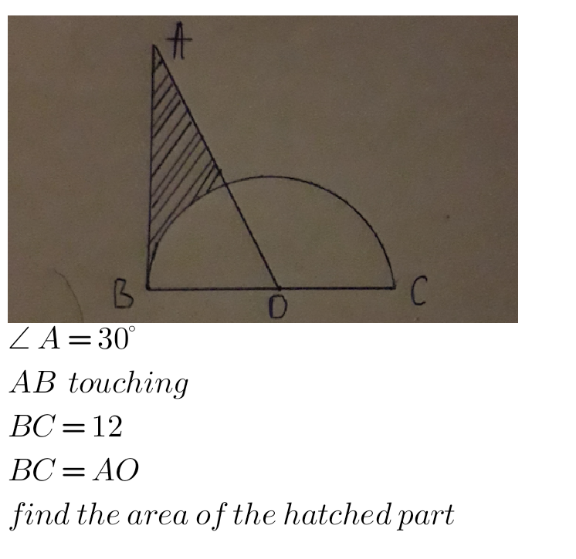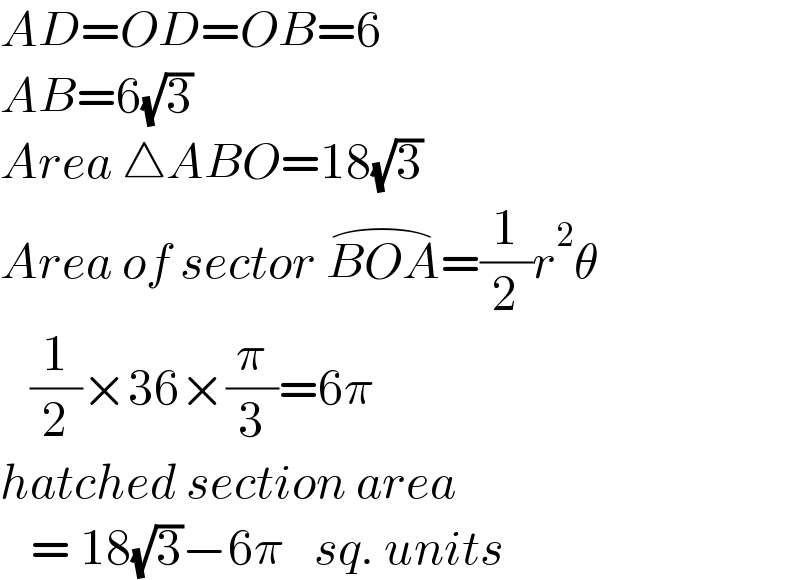
Question and Answers Forum
Question Number 146960 by mathdanisur last updated on 16/Jul/21

Answered by TheHoneyCat last updated on 16/Jul/21
![let A be the fuction that gives the area of a surface let Δ=ABO let x be the hatched area let D be the intersection between [AO] and the circle C(O,OR) let y be the portion AOD of the circle A(y)=πBC((180−90−A^Λ )/(360)) A(ABO)=(√(BC^2 −(((BC)/2))^2 ))=BC((√3)/2) A(x)=A(ABO)−A(y) A(x)=BC(((√3)/2)−π((180−90−A^Λ )/(360)))_■ I let you plot that on your calculator if you want a value by the way: you gave one information without necessity, indeed: A^Λ =30° can be deduced from the fact that AO=2BO ;−)](Q146972.png)
Commented by mathdanisur last updated on 16/Jul/21

Answered by ajfour last updated on 16/Jul/21

Commented by mathdanisur last updated on 17/Jul/21

